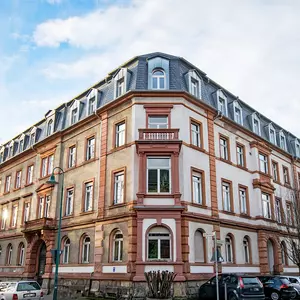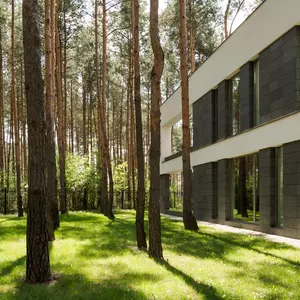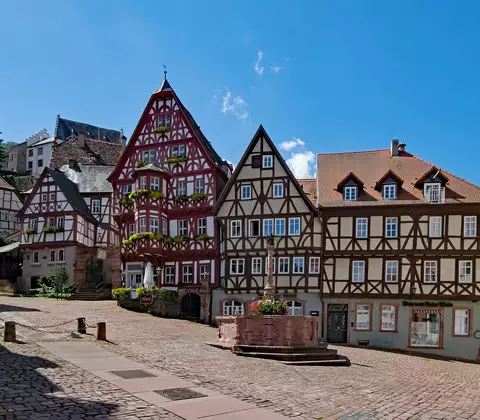
Are heat pumps suitable for old buildings?
Average CO2 emissions per capita
Generally speaking, heating systems are responsible for a large proportion of our day-to-day CO2 emissions. This is primarily because many buildings are still equipped with old oil and gas heating systems. So replacing these heating systems is important. It is also politically endorsed and therefore financially subsidised.
Heat pumps are the most popular heating systems used in new buildings. But are heat pumps suitable for old buildings and, if so, under what conditions?
How do heat pumps work?
Heat pumps use a coolant to draw heat from the surroundings. They use a coolant that vaporises when warmed even slightly. An electric compressor compresses the vapour, which heats the gas.
This warm gas transfers its heat to the water in the heating system via a heat exchanger. This cools the gas, returning it a liquid state, and the cycle can begin again.
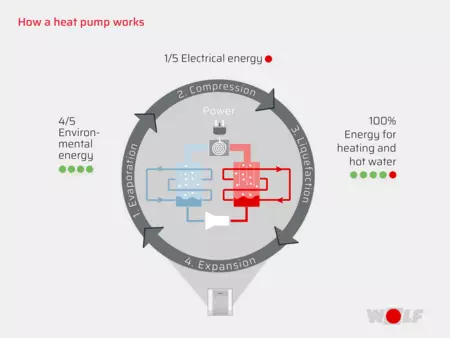
The different types of heat pumps
Air-to-water heat pump (air source heat pump)
Air source heat pumps draw heat from the surrounding air and use it for heating purposes. This type of heat pump is usually less efficient than the other types of heat pump but is the easiest to install.
Efficient, environmentally friendly, eligible for funding: the CHA-Monoblock
The WOLF CHA-Monoblock heat pump is not only efficient and environmentally friendly, it is also incredibly quiet. It also uses a natural coolant. Best of all, particularly high subsidies are available when installing these heat pumps in old buildings.
Brine-to-water heat pump (geothermal heat pump)
This type of heat pump uses geothermal heat as a heat source. They come in two designs:
- with horizontal collectors or
- with vertical boreholes.
Horizontal collectors are installed just below the ground’s surface. In contrast to vertical boreholes, they do not require any deep drilling work but do take up more area. Geothermal heat pumps have excellent efficiency levels because the ground still holds heat even in winter.
Water-to-water heat pump (water source heat pump)
Water source heat pumps draw heat from groundwater, for which two wells must be drilled. They have the highest efficiency level because the temperature of groundwater is always above 0°C.
The difference between the coolant temperature and the flow temperature is also lower than for other heat pumps. However, you will need a permit to drill the wells in most regions.
How economical are heat pumps in old buildings?
The smaller the difference between the ambient temperature and the flow temperature of the heating system, the more efficiently a heat pump can work.
The flow temperature describes the temperature of the heating water that is supplied to the underfloor heating or the radiators. The heating water temperature is mostly measured directly after it emerges from the heat generator.
The problem faced by heat pumps in old buildings is that
- the temperature of the air, groundwater or the ground is very low, especially in winter.
- At the same time, the flow temperature of the heating systems in old buildings is usually quite high as the radiators are relatively small and older buildings are often poorly insulated.
The heating system consumes more electricity to compensate for this difference in temperature. Nevertheless, heat pumps can still work efficiently in old buildings. Thanks to their operating principle, heat pumps can generate four or five times more thermal energy than would be possible using the electrical energy consumed.
Under what circumstances is it worth equipping old buildings with heat pumps?
Was your house built before 1970? If the energy-efficiency of your home has not been upgraded since then, it could be beneficial to replace the heating system in your old building. Old gas and oil heating systems without condensing technology should definitely be replaced with modern equipment.
To calculate whether using a heat pump in an old building would be financially worthwhile and whether it would receive suitable funding, you need to know the seasonal performance factor, or SPF for short. This value tells you how many units of heat the heat pump generates from one unit of electricity.
SPF = heating energy (in kWh/year) / electricity (in kWh/year)
A heat pump is more economical than an oil heating system if the SPF is greater than 1.7. To be more efficient than a gas heating system, the SPF of the heat pump must be greater than 2.5. Heat pumps with these SPF values are also more environmentally friendly than a gas or oil heating system.
However, in practice, the seasonal performance factor must be higher than the sample values calculated using fuel prices. After all, the aim is to recoup the higher purchase price of a heat pump. Maintenance costs are also incurred.
The typical SPF vales of the respective heat pump types are as follows:
- Air-to-water heat pump: 2.9 (some even 4–5)
- Brine-to-water heat pump: 3.9
- Water-to-water heat pump: 5
Air-to-water heat pump
CHA-MONOBLOCK
The WOLF CHA Monoblock heat pump is sure to fit in with the overall design of your home, and is perfect in the garden, out on the patio or mounted on the wall – all with an impressive COP of 4.65.
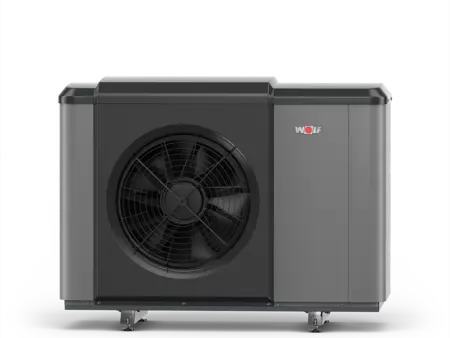
How to increase the efficiency of heat pumps in old buildings
As previously mentioned, the better the insulation in old buildings, the more worthwhile it is to install a heat pump. You will then use less power to heat your home. If you want to upgrade your insulation, you should improve the cellar ceiling and attic floor. You can also replace the windows and have insulation retrofitted on the façade, but these measures are more expensive.
You can also substantially lower the flow temperature by replacing the old radiators with radiant panel or underfloor heating systems. This makes the heat pump even more efficient. Have your entire heating system adjusted and regularly serviced by an expert. An incorrectly set heating system wastes energy.
Heat pump subsidies for old buildings
Heat pumps are subsidised by the German Federal Office for Economic Affairs and Export Control (BAFA) and the Reconstruction Loan Corporation (KfW). The two subsidies can be combined. It is vital that you apply for the funding before starting your project.
Energy suppliers, municipal utilities and German federal states also provide subsidies. Our free subsidy information service gives you a quick and easy overview of all possible funding programmes.
Conclusion
Heat pumps for everyday use and possible alternatives
The use of heat pumps in old buildings is environmentally friendly and makes economic sense under certain conditions, particularly in light of the many funding opportunities. So find out about these in before proceeding.
Alternatively, you can combine a heat pump with a gas heating system or opt for a modern gas condensing boiler as a sole heat generator.
